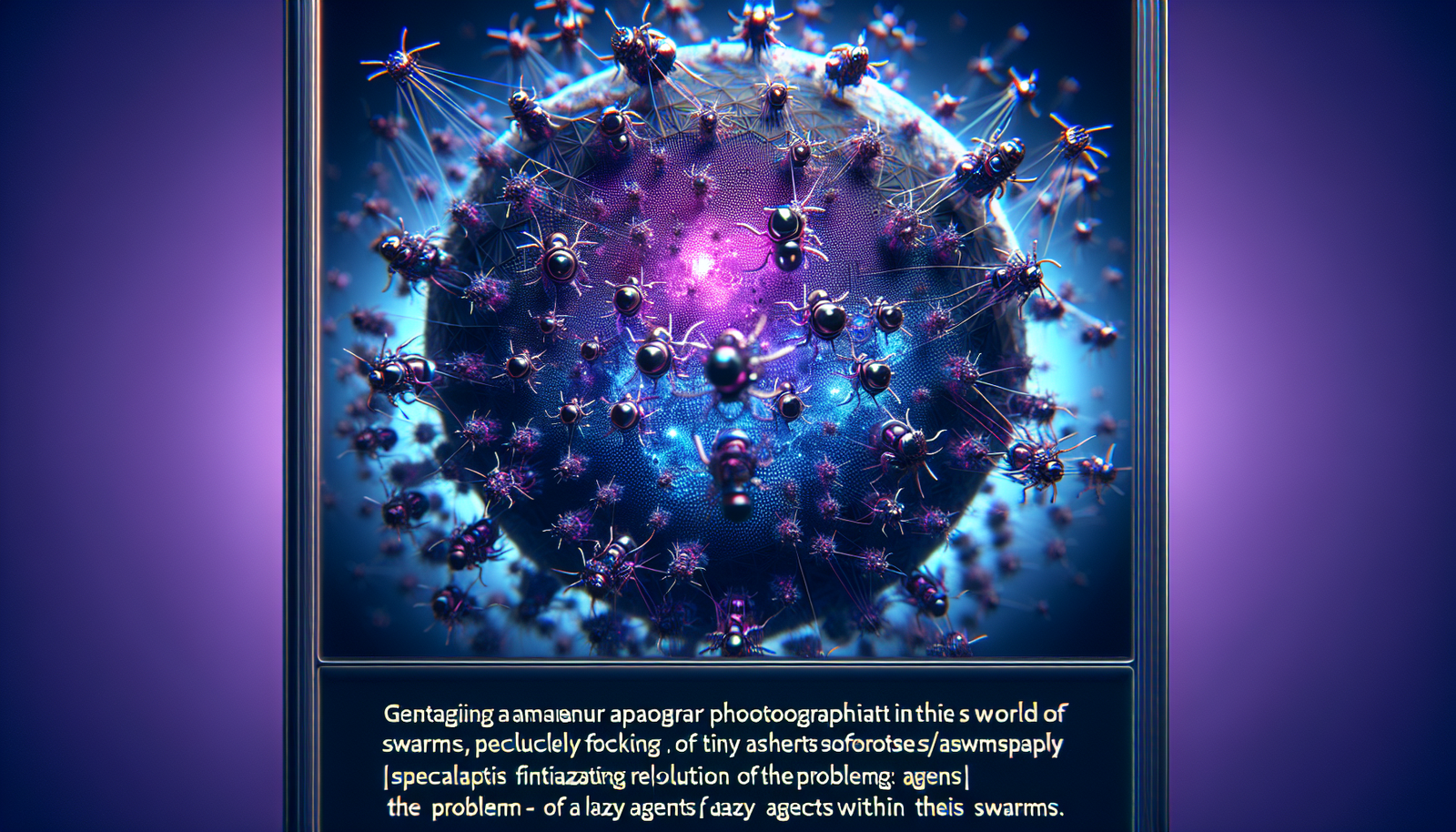The challenges related to cooperation in robotic swarms are becoming increasingly pressing. _Assigning precise responsibilities to microrobots_ proves essential for optimizing their effectiveness in collective tasks. Recent research reveals how reward algorithms allow overcoming the *lazy agent problem*, thus ensuring the equitable contribution of each unit. _The harmonious management of individual efforts_ becomes a priority for the success of ambitious projects mobilizing these miniaturized technologies. This scientific turn could revolutionize not only robotics but also all collective systems.
Lazy Agent Problem
The challenge of fairly distributing effort within groups manifests in both human interactions and robotic swarms. In a collective setting, each member must contribute to the overall success. The difficulty lies in recognizing individual efforts, particularly when addressing the realm of microrobots operating at the micrometer scale.
The Role of Microrobot Research
A recent study published in Science Robotics, led by Clemens Bechinger, highlighted significant advances in managing this challenge. This research focuses on microrobot swarms, which, propelled by laser spots, must collaborate to accomplish complex tasks. The reward and recognition of each robot’s contributions become major issues for the efficiency of collective operations.
Innovative Techniques Used
The researchers implemented a machine learning algorithm coupled with a specific method designed to evaluate each microrobot’s contribution. This process ensures that the efforts of each unit are recognized, thus avoiding the lazy agent problem that can compromise the collective performance of the swarms.
Microrobot Skills and Collective Behavior
The unpredictable behavior at such small scales presents a considerable challenge. Through the application of counterfactual rewards, researchers were able to precisely control the behavior of each microrobot. This allowed the entire swarm to work in a synchronized manner, thus maximizing the efficiency of the interventions.
Contributions of Counterfactual Rewards
The counterfactual rewards assign credit to each microrobot for its contribution, allowing the swarm to self-improve in the distribution of efforts. This mechanism strengthens the collective and encourages each unit to actively participate in the tasks to be accomplished.
Application Perspectives
The results of this research pave the way for promising applications in fields such as medicine and environmental monitoring. In these sectors, precise control and coordination are essential for accomplishing complex and critical missions, making microrobot swarms particularly relevant.
Researchers’ Reflections
Citing Bechinger, the study emphasizes that recognizing and optimizing individual contributions in a swarm, even on such a tiny scale, is fundamental to ensuring the best outcomes. The approach adopted not only enhances the efficiency of microrobot swarms but also offers avenues for improving teamwork in any collective system.
FAQ on Swarm Study: Microrobots Provide a Solution to the Lazy Agent Problem
What is the main objective of the study on microrobots?
The main objective of the study is to develop a system capable of optimizing the contribution of each microrobot in a swarm to overcome the lazy agent problem, where some robots may neglect their share of work.
How did the researchers measure the contribution of each microrobot?
The researchers used a machine learning algorithm combined with counterfactual rewards to estimate and recognize the individual contribution of each microrobot in collective tasks.
Why is the lazy agent problem an issue in microrobot swarms?
The lazy agent problem is critical because, without a fair reward system, some microrobots may not fully engage, which can undermine the overall efficiency and coordination of the swarm.
Which sectors could benefit from the use of coordinated microrobots?
The advancements made in the study could be applied in fields such as medicine for precise surgical interventions, and environmental monitoring, where coordination and precise control are vital.
What are the benefits of “counterfactual rewards” in this research?
Counterfactual rewards allow for the proper crediting of each microrobot for its efforts, encouraging all swarm members to optimize their performance, thereby improving overall productivity.
What role does simulation play in the study of microrobots?
Simulation is essential for testing and validating different effort distribution strategies in a controlled environment before their application in real-world scenarios.
How could this research influence the future of collaborative robotic systems?
This research could revolutionize robotic systems by introducing methods to improve cooperation and the equitable distribution of tasks, thus increasing their efficiency in various applications.






